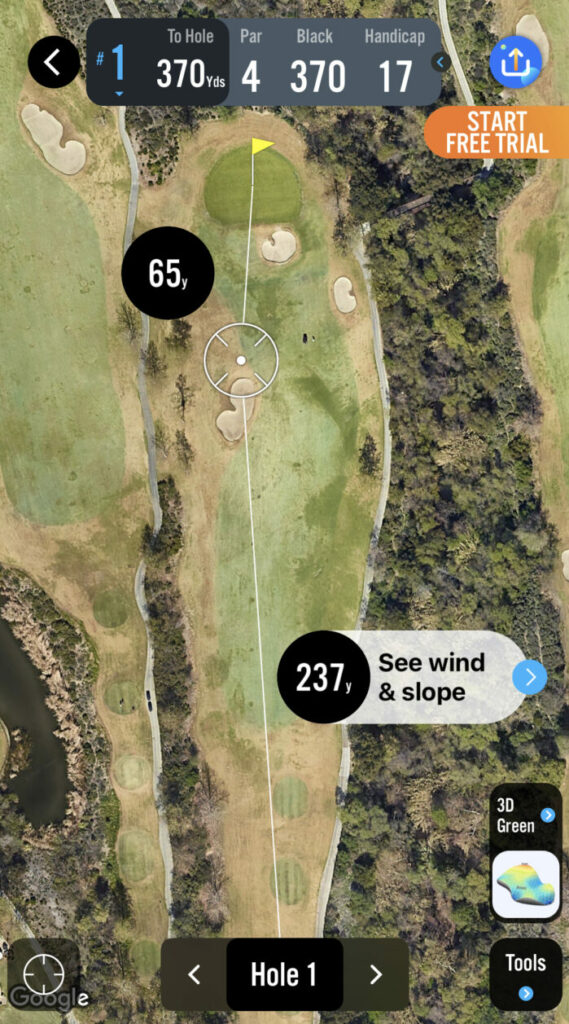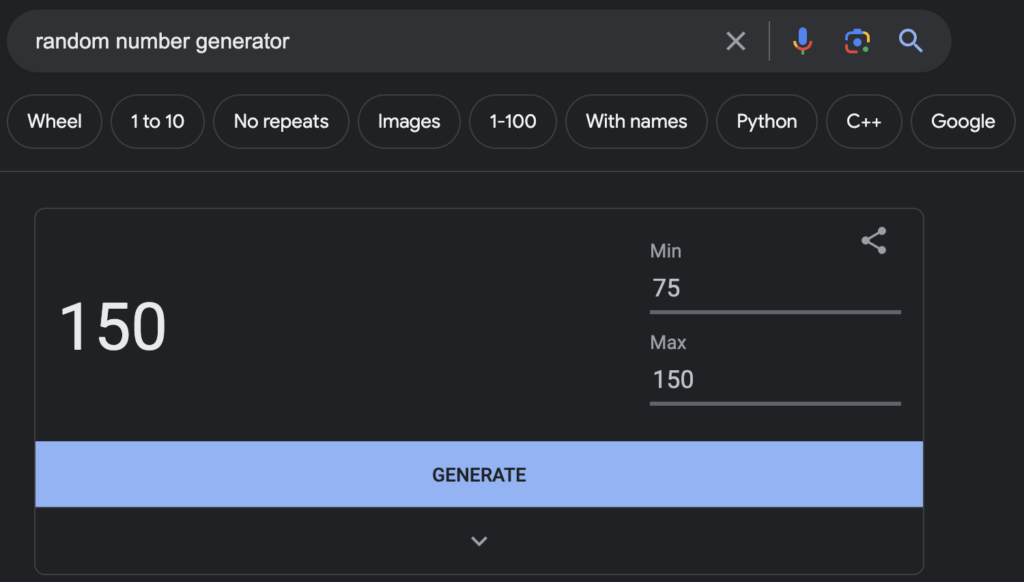
What if there was a secret for how to break 90 in golf?
It’s simple in its concept, but daunting to most of mortal amateurs.
In most social circles, breaking 90 is the first ticket to being declared “good at golf”.
It’s the point you start averaging better than bogey for each hole.
That’s a game-changer.
You start expecting to make good shots rather than being surprised by them.
And you start getting more frustrated when they don’t come
Wherever you fall on the golf junkie spectrum, starting to break 90 changes something inside you.
You officially reach a point where golf is not just an activity… it’s a drug.
An all-encompassing rush that you have to get more of.
There are two secrets to being able to break 90 in golf.
But before we get to those, here’s a rundown of the practice guidelines that can help you get there.
If you saw our post about how to break 100 and are back to tackle more milestones, I will cover some of the same concepts but take them to the next level in this article.
>> Related: 5 Best Ways to Lower Your Handicap

Golf Swing Basics: Preferred Shot Shape
If you’ve reached this point, you are probably at the point where you can hit the center of the club face consistently.
Anyone who is anyone at golf learns to master that first.
If you can hit the center of the club consistently, then you can start understanding your tendencies and have enough consistency to adjust your swing with efficiency.
The next step of your golf swing evolution is finding a preferred shot shape.
You’ve hopefully hit enough balls at this point to know what your tendency is.
It’s usually where your biggest misses are.
Now it’s time to trust it and use it to your advantage.
‘Steer into the skid’ if you will.
However, I want to emphasize that you should only have one shot shape.
Trying to move the ball both ways is a sucker’s errand.
Become the master of one before you become the master of many.
As Colin Morikawa says in the video below, even the best players in the world will still play a preferred shot shape every chance they get. (Excluding Tiger Woods, of course.)
Golf is a game of misses and with this mindset, we are simply trying to miss better.
If you can know what shot shape you have a tendency you can essentially eliminate half of the golf course and only worry about hazards on one side.
For example, if you are right-handed and you know you tend to fade and all your misses are slices, why would you ever care what hazard is on the left side of the course?
You’re not hitting it there anyway.
Use that to help guide your strategy and know where to aim to maximize your chances of keeping the ball in play.
Putting for Success
Putting skills are somewhat of an oxymoron.
You need to putt well to be successful, but putting well probably doesn’t mean what most amateurs think it does.
Let’s do a mental exercise.
How often do you think a good putter makes a 10-foot putt?
60%?
50%?
Maybe 40%?
If your goal is to break 90 in golf, you might not consider yourself a good putter just yet.
I know I sure didn’t.
But good is an extremely relative term here.
So let me explain it to you this way.
The BEST putters in the world make a 10-foot putt less than 50% of the time. (Assuming that we both agree the best putters are all on the PGA Tour.)
Their make percentage falls right around 40% with some variability between the best and worst players.
That’s insane when you think about it.
Especially when you realize how many times you see 10-footers go in while you’re watching TV.
Next time you are out on a practice green, put a few balls down around 10 feet from the hole.
It’s really not that far.
Yet misses are so much more frequent than most of us expect.
If you are here with the rest of us Muni Mules, you are an ELITE amateur golfer if you can make just one-third of these 10-footers.
Take those good days and cherish them for eternity.
Most of us should expect between 25-30% on our good days.
So why bring all this up?
The real separate of what makes the tour pros so much better than us is what they do with the next putt.
We are all going to miss the 10-foot putt more than we make it.
But the tour pro is only going to three-putt about one out of 200 times.
How does that compare to us amateurs?
Well, I can count 2 times in my last round that I three-putted from 10 feet.
If you want to break 90 these are the blow-ups you need to rid yourself of.
Nothing hurts a scorecard, or an ego, more than a three-putt bogey after you had a chance at a birdie.
Managing Your Mental Game
Manage your expectations.
There are two parts to this.
Number one, you’re going to hit bad shots.
What are you going to do after they happen?
I’ve referenced it before and there, are many great resources out there to help with this, but you need to have a game plan before stuff goes wrong. (One of my favorites is Be a Player by Pia Nilsson and Lynn Marriot. Also, check out Jon Sherman’s The Four Foundations of Golf)
“Everyone has a plan until they get punched in the mouth.”
I wouldn’t invite your playing partners to punch you in the mouth, but you should still have a plan.
You’re going to hit a ball in a bunker. You’re going to get a bad bounce into the rough. The best drive you hit all day is going to roll into someone else’s divot.
What are you going to do about it?
You can’t control the bad thing from happening, but you can control your reaction to it.
The second part of managing expectations is knowing what to expect from your skill level.
If your goal is truly to break 90 in a round of golf, why would you be upset if you get a bogey on a hole?
When you hit your drive a few feet into the rough, then miss the green short, only to chip on and two putt for bogey.
That should be celebrated.
You are right on target for your goal.
When you miss the 20-foot birdie putt and can’t believe the ball didn’t break the way you thought it would, don’t start cursing the golf gods.
Go make the par and know that you just beat scored better on that hole than almost everyone else in your same skill level.
Don’t get me wrong.
It’s hard to train your brain to do this.
But not only will it help you shoot lower scores, it will help you enjoy the game more.
And that alone might be worth it.
Practice Strategies
In our post about breaking 100, I talked a lot about practicing like you play.
Having a routine that you practice time and time again on the range will be transferable to the course.
All of that is still true when you are trying to break 90, but I am going to add a few more wrinkles into the fray.
In addition to practicing your routine, it would also greatly benefit you to actually practice some of the shots.
What do I mean by that?
When you know you are about to play a certain course tomorrow or next week, or whenever, you should simulate what that round might look like.
Act like you are going to play each hole and practice the shot you are going to try and hit.
Tiger Woods used to be famous for doing this in prep for major tournaments.
For example, he would identify shots he knew he would need for tee shots at tournaments like The Masters and he would literally practice them during live rounds at other tournaments.
Now I’m not expecting you to be that pathological in this pursuit of breaking 90, but the point is the same.
Almost all of us are going to do most of our prep on a practice range, so here’s what I suggest.
Look up what course you are going to play on a GPS app like 18 Birdies.
Any of them will do, this is just the one I use most often.

Plot out what the holes look like and guide yourself through a round of golf hitting all the shots you would need to hit.
Hit a drive that goes way right?
Great.
Try practicing a recovery shot where you have to punch out with a 5-iron.
Make it as realistic as possible!
If you don’t have a round lined up or want to practice something more specific, I also love using a random number generator to give me different imaginary targets.
It doesn’t need to be more complicated than going to Google and searching “random number generator.”

Set up a range of numbers you want to practice and then try hitting shots to the different yardages with an emphasis on never hitting the same shot twice.
An example of how I might do this is to set up a range between 90 and 150 to practice my approach game.
All I have to do is generate a new number after every shot (I will sometimes hit two or three shots to each yardage depending on how I’m feeling that day) and I am guaranteed to get some good variability in my practice.
Now, do I know how close I get to actually hitting that yardage?
Not really.
I generally don’t have a launch monitor at the driving range.
And even if I did, the balls are so bad it wouldn’t really matter anyway.
The goal here is that you are practicing different feels.
Start noticing what it feels like to try and hit an 8-iron at 90%.
What does it feel like to get a few extra yards out of your pitching wedge?
Once you start mastering this, I promise the strokes will fall off your game like hair off my balding head.
How to Break 90 in Golf: The Secret Sauce
Your persistence has paid off.
Everything so far is going to help you get better at golf, but what does breaking 90 look like during your round of golf?
What stats should you expect?
What goals should you have while you’re out on the course?
If you’re still here with me, two things will help you break 90 every time you play.
1. No Penalty Strokes
If you’ve already read about breaking 100, then you’ve heard about this before.
Let’s review.
The quickest way to improve your scores on a golf course is to never take a penalty stroke.
Ever.
At all costs, you should be playing keep away from all hazards.
Will you inevitably lose a ball in the water or hit one out of bounds?
Of course.
But if you can avoid it, your chances of breaking 90 are almost inevitable.
Do professionals hit balls out of bounds?
Yes.
But you’re not a professional and they probably don’t do it as much as you think.
After all, how often do you see pros hit balls out of bounds and still win the tournament?
The overarching point here is don’t put a club in your hand that is uncomfortable.
If you can blast a driver past all your buddies, but it goes out of bounds half the time, don’t hit the driver.
No ego, amigo.
The trick here isn’t piling up birdies to make up for your blow-up holes.
On the contrary.
I mentioned this in a post about greens in regulation by handicap, scratch golfers only average about 2 more birdies per round than a 20 handicap.
That means there are 18 shots of difference being lost somewhere else in your game.
The trick is to simply not have the blow-up hole(s).
Your ticket to shooting 89 is as simple as that.
On a traditional par-72 layout, that means 17 bogeys and 1 par.
Just one par!
That’s all you need to make this work.
Therefore, even if it takes you one extra shot to get to the green.
Take it!
You can still two-putt for bogey and be right on track.
Manage your expectations.
I know what you are thinking, though…
What if your trouble isn’t with the trouble isn’t on the green, but rather around it?
2. Avoid Double Chips
No one likes a double dipper.
The second secret is all about the short game.
You should never have to chip twice on the same hole.
That means no chips that get bladed over the green.
No chips that get chunked 4 inches in front of where you are.
And definitely, no chips that get hosel rocketed into a bunker.
Remember when I said this was daunting to us mortal amateurs?
I can already see some people squirming at the thought of chipping yips.
But fear not.
There is a cheat code to this cheat code.
What’s the easiest way to make sure you don’t have to hit two chips on the same hole?
Putt.
From everywhere.
Ok, maybe not everywhere.
But anywhere you have a clear path to the hole, you should be putting.
Period.
There is simply less variability with a putter than a wedge.
There are some obvious exceptions to this rule.
For example, if you have to chip over the corner of a bunker, you should probably not try to putt that.
Also if there is a large mound or uneven grass, this would be another place where chipping would conceivably be an advantage.
But all things being equal, if your brain is negotiating between a wedge of a putter when you are around the green, you should always choose a putter.
And in worst-case scenarios, just get the ball on the green any way possible.
Guarantee yourself a chance at a two-putt par.
Tracking Progress and Adjusting
Lastly, one of the best ways to improve your game is to see your trends over time.
This doesn’t mean you have to have a diary entry dedicated to every golf hole you play.
Far from it.
It simply means you should track stats that matter and do it as frequently as possible.
There are a few highly recommended options out there.
Two of the most common that you’ll see are Arccos and Shot Scope.
However, if you’re not ready to invest in actual tracking tech, free apps can provide enough information to kickstart your tracking journey.
My favorite for this is 18 Birdies.
How to Use Your Stats to Break 90 in Golf
Dividing stat tracking into two components can be particularly helpful.
First, comparing your current stats with past performances allows you to evaluate any progress.
It’s easy for our minds to get tricked that we are improving something even if we are not. So it’s nice to have data to defend whatever our feel is.
Secondly, stat tracking plays a pivotal role in goal setting when used to compare your current ability against the ability of others that you aspire to be.
Taking handicaps, for instance, if your aspiration is a single-digit handicap, compare your current stats with the benchmarks for single-digit handicaps.
See how many greens they hit, how close they hit approach shots to the hole, or how many putts it takes them to find the hole from 20 feet away.
Now, if you aim to break 90 in your next round of golf, a good goal might be hitting 25% of greens in regulation.
In other words, hitting 4-5 greens per round.
Greens in regulation are the most relatable traditional stat compared to scoring, so it’s a great thing to track.
Most tools will also let you track penalty strokes pretty easily, but tracking the double chips might be one you have to note on your own.
How to Break 90 in Golf: Final Thoughts
Learning how to break 90 in golf isn’t going to happen overnight.
It takes time to practice these skills and get your game and your mind thinking in a way that’s going to help you succeed at this.
However, it is achievable.
I’ve been there before, I’ve seen others do it for the first time and it’s a rush.
There’s an emotional boost that comes with knowing you can play better than bogey golf out there.
As I mentioned before, the concept of what it takes to break 90 isn’t a difficult one.
No penalty strokes.
No double chips.
As we both know, though, the execution isn’t always that easy.
After all, that’s kind of what makes golf such a great game.
Anybody can play it, but few can succeed at it.
It’s going to take practice and a little bit of discipline out on the course.
But it’s all worth it.
Before long, you’ll be on your way to your next milestone…



Leave a Reply